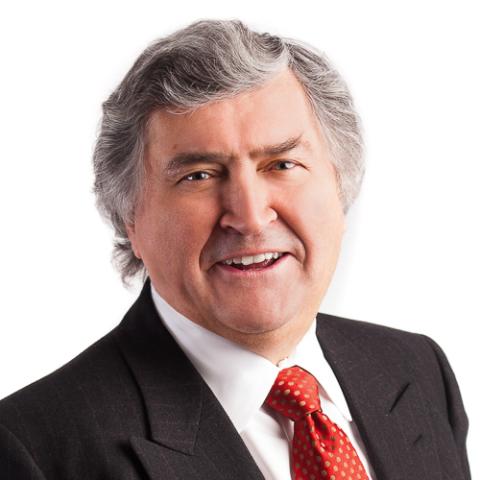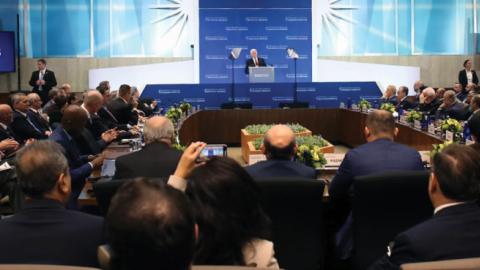On July 15-18, the U.S. State Department, under the auspices of Secretary of State Michael Pompeo and directly hosted by Ambassador-at-Large for Religious Freedom Sam Brownback, held its second Ministerial on religious freedom in Washington, D.C.
The word “Ministerial’ is an unusual one and, until the first one, in 2018, neither I nor anyone I knew had heard it. It is rare and refers to a high-level conference between senior government officials. It is not in the first place a diplomatic negotiation intended to produce a common policy, nor is it simply a conference. It is an unusual blend of the two, which allows diplomatic flexibility with diplomatic possibility.
The first Ministerial, in the summer of 2018, was a very good gathering, but was convened at short notice. This one had much advance, arduous and very careful planning, and it showed.
The official conference drew 1,000 invited people, and invitations had to be closed off months in advance. It was the largest human rights conference ever held at the State Department and spilled over into massive tents erected in the inner courtyards. People from 100 countries were represented, with several dozen cabinet and ambassadorial-level representatives. It was also probably the world’s largest-ever religious freedom gathering.
But the official gathering was only part. Most human rights and religious freedom groups cooperated in arranging conjunct conferences, workshops, seminars and celebrations throughout the city. There were over 80 such sessions, plus innumerable other gatherings not listed in central programs. For example, Falun Gong followers, still defying their long repression by the Chinese government, held a march that brought downtown D.C. to a standstill. This latter frustrated me and many others, who then missed sessions, but since they represent people whose repression include the removal and selling of organs while their members are still alive, I could wait.
How to summarize this? People from all over the world and every religion met and heard one another. There were over 1,000 presentations during the week. It was like, as the cliché really has it, trying to drink from a fire hose. But here, from one who was not of course everywhere, are a few highlights and impressions, with my apologies to the many others who should be included.
The most striking presentations, which took place in every official session, were from those who were neither diplomats nor activists nor academics, but from those who had and were directly suffering from religious persecution. To hear back-to-back the messages of forgiveness from the rabbi of the Tree of Life synagogue in Pittsburgh, where 11 people were massacred in October 2018, then the imam of the mosque in Christchurch, New Zealand, where 51 people were massacred in March 2019, then representatives of churches in Sri Lanka, where over 300 people were massacred on Easter this past April, is unforgettable.
Another highlight was the panel of old friends Nancy Pelosi, the current (Democratic) Speaker of the House of Representatives and retired (Republican) House Representative member Frank Wolf. In their shared concern and devotion to international religious freedom, especially in China, they evoked an older, and despite inflammatory news reports, continuing political congeniality in key issues, such as international religious freedom. Pelosi came despite political pressure not to do anything that might imply cooperation with the current administration, and at a time when the House of Representatives was in more immediate turmoil than usual.
Yet another was the address by Lord David Alton of the U.K. I have known and heard Lord Alton many times over the last decades and have always been impressed. He is a humble man who has usually focused on the immediate issues clearly, directly and quietly. This time he did all of the above, except this time not so quietly but with a powerful and ringing challenge and call to action. With apologies to many others, I think this was the highlight of the conference.
Was this simply an all-too-common conference high? Only the future will tell, but I think not.
Many countries have now appointed senior foreign policy personnel focused on religious freedom. The U.K. foreign office announced that it has accepted without reservation the recent report it commissioned on the current persecution of Christians around the world, which found that in the Middle East, the situation was and is near genocide. And nearly every religion of which I know was represented and had a voice. This not only adds diplomatic clout to the struggle for religious freedom but also removes the common slur that this is simply a parochial domestic-politics-driven American preoccupation. There is now an increased governmental apparatus focused on religious freedom, but also promised follow-up on regional gatherings, including in Muslim countries on this issue. And numerous NGOs are developing working links across regional, national and religious boundaries.
What are the negatives? Some worried that, comparatively, the persecution of Christians was underrepresented. This is perhaps true, perhaps to head off domestic criticism that the event was simply an event to appeal to the American Christian right, but this current persecution was given more attention than at any governmental I have witnessed. Indian representatives also raised that religious persecution in their country did not receive due attention, especially since a fifth of the world is Indian. This might be true but is likely simply a reflection of the limits of trying to cover the world in a conference.
The larger negatives came from outside the conference, especially in media coverage and perhaps occasional sniping by secular human rights organizations, who may have felt slighted since their major foci were elsewhere. The major problem was simply the comparative lack of media coverage of what was a major international event. And much of the American coverage retreated, perhaps of lack of resources to deal with world trends, to treating it simply through the prism of domestic politics: that the administration was simply appealing to its purported Evangelical base. But it was impossible to listen to Vice President Pence’s, or Secretary of State Mike Pompeo’s, or host Ambassador-at-Large for Religious Freedom Sam Brownback’s speeches and not realize that these were issues drawn from their hearts.
But the vast majority of the wonderfully varied religious and secular participants of the Ministerial would have found these analyses strange and symptomatic of a secular myopia, wherein religion is all too often seen as a mask for other, purportedly deeper, motives.
The effects of the Ministerial might dissipate, but so far, the trends are hopeful, for which our increasingly religious world should be glad.

















